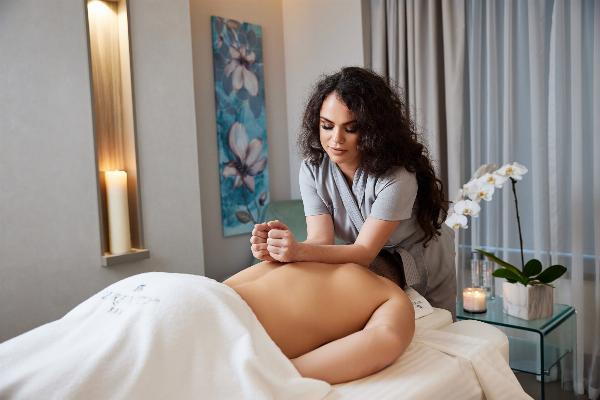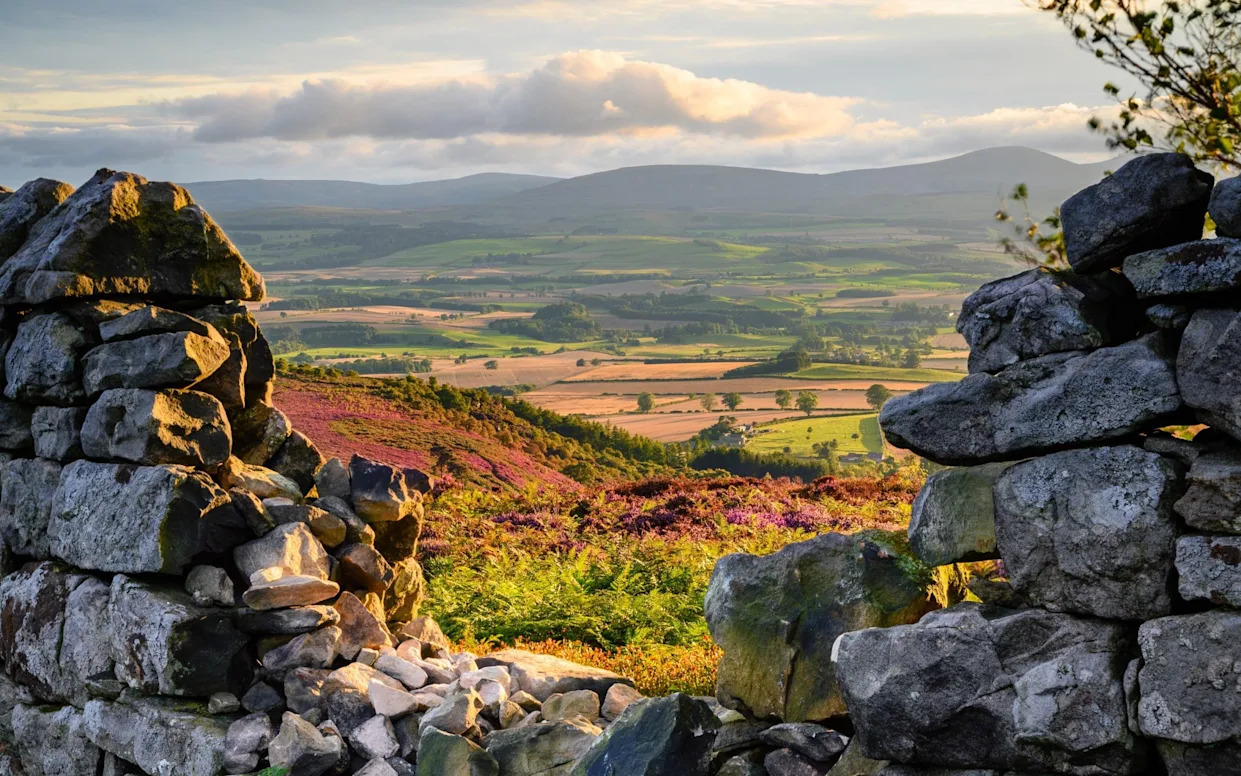
Northumberland’s trump card is that it’s England’s least-populated county. All that space, and so few people. And it’s not just any old space. Its coastline is an unfolding drama of runway-flat beaches, don’t-mess-with-me castles and islands that scream with wildlife. Inland are the sheep-dotted moorlands, quiet valleys and soft rounded hills of the Northumberland National Park which also encloses the huge playground of Kielder Forest and Water. Striding across the south of the county is the mighty frontier of the Roman Empire: Hadrian’s Wall.
There are market towns and fishing villages, but nothing so brash as cities, bright lights and shopping malls. True, there are grand houses and grand gardens, but often tucked away. Country inns, craft breweries and seafood specialists, plus a growing number of seriously high-end restaurants, tempt appetites. But it’s the ease with which peace can be found, among its varied attractions, that gives Northumberland a quiet edge over other regions.
For more Northumberland inspiration, see our guides to the region’s best hotels, restaurants, pubs, beaches and things to do.
In this guide:
How to spend the perfect day in Northumberland
How to spend the perfect week in Northumberland
When to go
Where to stay
How to get there and how to get around
Know before you go
How to spend the perfect day
Morning
Unless Roman history is your passion – in which case, make for Hadrian’s Wall – head for the coast to get the best all-round experience. Start a few miles inland, at Alnwick, specifically at Barter Books, one of the country’s largest second-hand bookshops (in the former railway station) and a good spot to get a jolly good breakfast, from bacon butties to smashed avocado. Don’t linger too long over the bookshelves before walking the 10 minutes to Alnwick Garden. You don’t need to be a plant person to enjoy this vast contemporary creation, from its bamboo labyrinth and water cascade to its 3,000-strong rose garden and deliciously deadly poison garden.
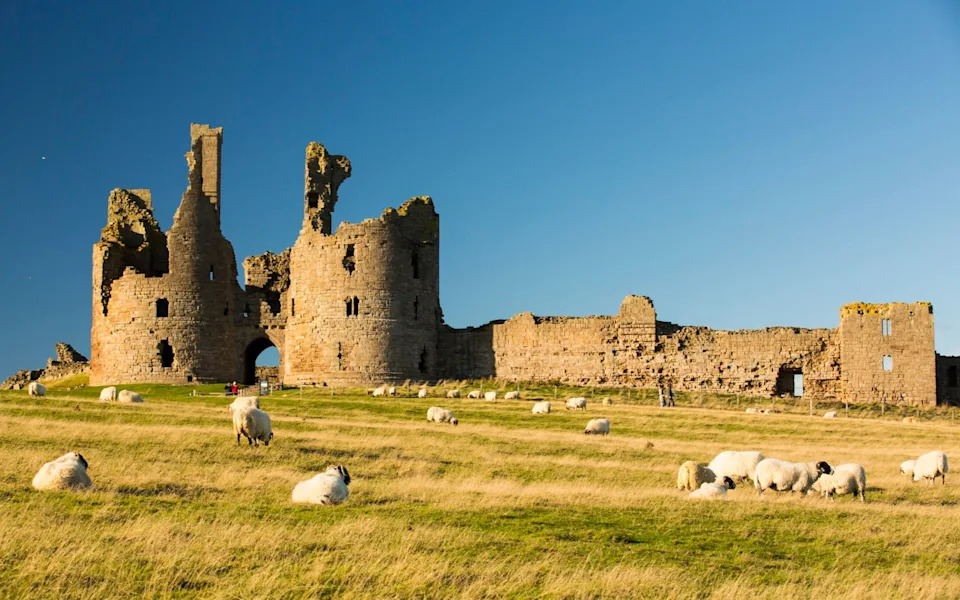 Dunstanburgh castle on Northumberland's coast near Craster
Dunstanburgh castle on Northumberland's coast near Craster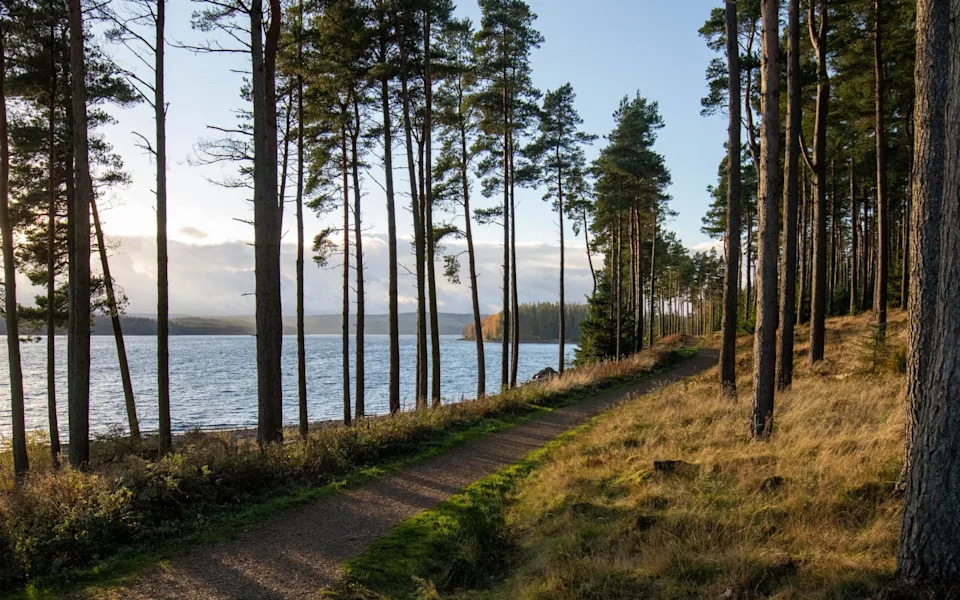 Dunstanburgh Castle and Kielder Forest represent Northumberland’s abundance of ancient fortifications and natural wonder - Ashley Cooper; Emilia Hillary/Getty
Dunstanburgh Castle and Kielder Forest represent Northumberland’s abundance of ancient fortifications and natural wonder - Ashley Cooper; Emilia Hillary/GettyA short walk leads to Alnwick Castle, the second-largest inhabited castle in England (home of the Duke of Northumberland) to enjoy dazzling state rooms, striding the battlements or learning to fly on a broomstick (yes, it was a Harry Potter filming location).
Afternoon
Drive the coastal route north – with glimpses of tempting beaches such as Embleton and Beadnell – 20 minutes to Seahouses, a small and jolly traditional seaside resort and fishing village. Pick up a late lunch of fish and chips – both Lewis’s and Neptune’s vie for top “frying” position – to eat on the harbour wall. Now you have a choice, depending on your energy levels. If you’re itching to get among the sand and the dunes, take the three-mile walk north along Bamburgh beach. The castle dips in and out of view until, finally, it towers preposterously above you on its rocky outcrop. Return the same way or head inland across fields on a way-marked path.
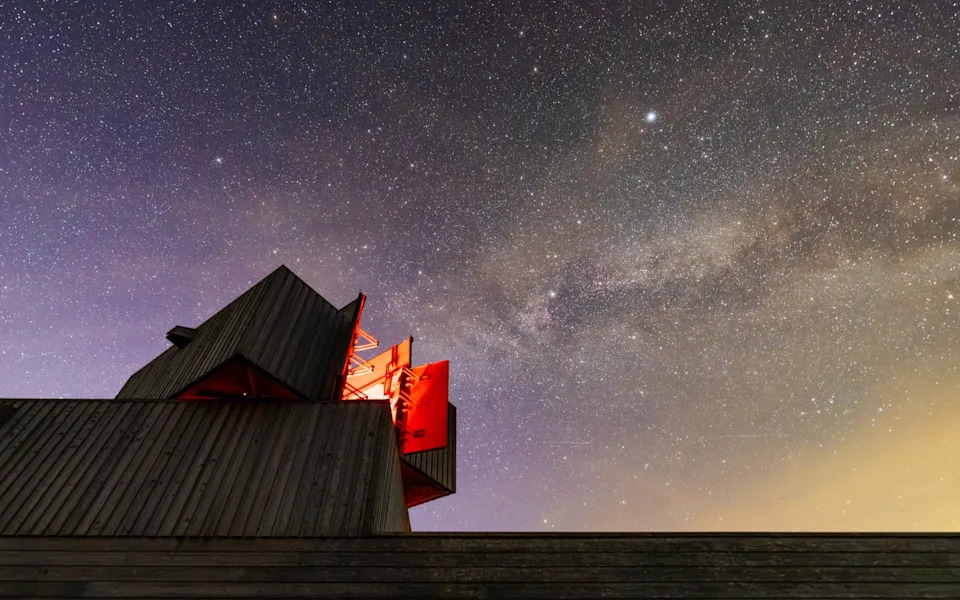 Kielder Observatory offers the chance to gaze up at the universe in Europe’s largest Dark Sky Park
Kielder Observatory offers the chance to gaze up at the universe in Europe’s largest Dark Sky ParkAlternatively, from Seahouses take a Farne Islands boat trip. Famed for their grey seals and seabirds, the time of year dictates what you’ll see – seal pups in the autumn, for example, puffins in the summer – but, always, there will be whiskery grey seals.
Night
Head back south along the coast, after five miles turning left along the narrow road to tiny Low Newton-by-the-Sea where the road ends. Your destination is The Ship Inn for a pint of its own-brew beer while gazing at the sea from the village green. Supper is either at The Jolly Fisherman in Craster fishing village, 10 minutes south, where you’ll have booked a table in the conservatory for its spectacular sea views. Alternatively, for an innovative tasting menu, try Sonnet back in Alnwick.
AdvertisementAdvertisement#«R4kekkr8lb2m7nfddbH1» iframe AdvertisementAdvertisement#«R8kekkr8lb2m7nfddbH1» iframeBack to index
How to spend a week-long holiday
After an introductory taste of Northumberland’s coast, spend a couple of days exploring it more leisurely; 40 miles of the coastline is a designated National Landscape (formerly an Area of Outstanding Natural Beauty). Perhaps start with a brisk scamper on Alnmouth beach and a hot breakfast buttie at the village’s Whittling House before heading north to Bamburgh’s Norman castle. It’s worth the steep climb as much for the views from the battlements as for the lofty state rooms. Make time for a cuppa in the Courtyard Café; the scones are Bake Off-worthy.
Don’t overlook the village’s volunteer-run Grace Darling Museum, on your way to the next-door Bamburgh Walled Garden café for lunch.
Driving north, Holy Island (or Lindisfarne, its Celtic name) will be constantly hovering, temptingly, on your eastern horizon. Check the tide times before crossing the causeway (the island is cut off twice a day by tides, and the sea doesn’t hang around) to explore: the castle, priory and wildlife are highlights.
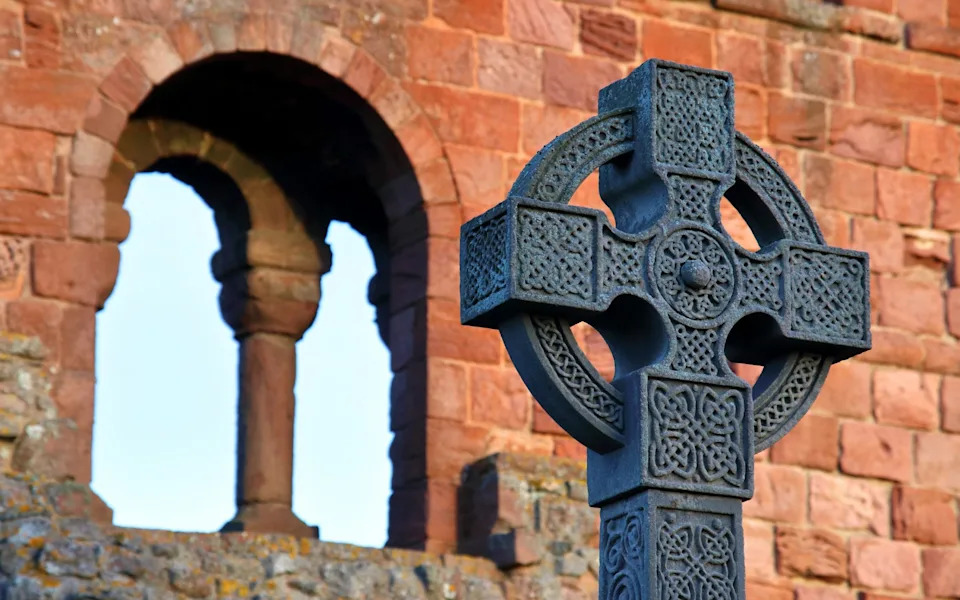 A Celtic Cross at the Holy Island of Lindisfarne
A Celtic Cross at the Holy Island of Lindisfarne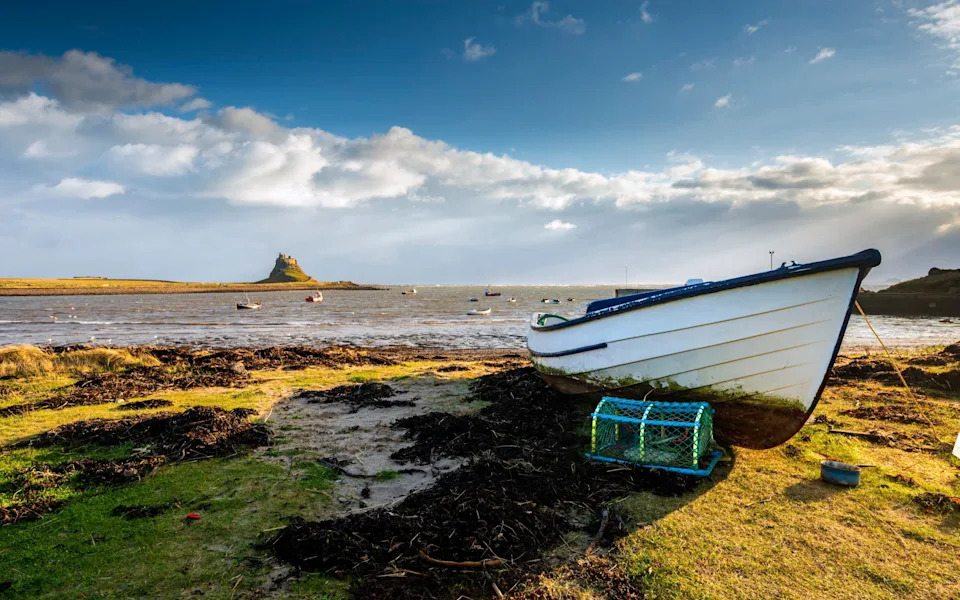 The tidal island of Lindisfarne (Holy Island), was originally the site of a monastery since destroyed by Viking invasions in 793 AD - Peter Swan; John Finney / Getty
The tidal island of Lindisfarne (Holy Island), was originally the site of a monastery since destroyed by Viking invasions in 793 AD - Peter Swan; John Finney / GettyBack on the mainland, if you’ve time for one more beach, make it Cheswick for a lovely wild walk, before heading inland for the next couple of days, starting at Ad Gefrin, in Wooler. This imaginative museum recreates the summer palace of Northumbria’s powerful Anglo-Saxon kings; time your visit well and you’ll catch a tour (and tasting) at the adjoining whisky distillery. From here it’s a beautiful drive south and west across moorland and sheep-dotted pastures, with the soft rounded Cheviot hills over to your right, towards Kielder Forest. Make time to call in at Cragside, Victorian industrialist Lord Armstrong’s country house, full of his inventions.
AdvertisementAdvertisement#«R4uekkr8lb2m7nfddbH1» iframe AdvertisementAdvertisement#«R8uekkr8lb2m7nfddbH1» iframeKielder, with its huge forest and lake, is all about the outdoors: hiking and cycling, kayaking, stand-up paddleboarding or just gentle forest walks complete with artwork installations. Book ahead for an evening event at Kielder Observatory – you’re in Europe’s largest Dark Sky Park – to follow an early warming supper at The Pheasant Inn.
For the last two days, head south to Hadrian’s Wall, basing yourself in Hexham with its 12th-century abbey, riverside setting and range of independent shops. After ticking off the nearest sites – Chesters and Housesteads Roman Forts, and Vindolanda (technically, a frontier site that predates the wall) – walk one of the most scenic sections, from Steel Rigg to Cawfields Crags and Quarry, and catch the AD122 Hadrian’s Wall bus back. Enjoy a well-deserved supper at The Rat Inn, two miles north of Hexham and with far-reaching views over the Tyne valley.
Back to index
When to go
The northern latitude means it’s a couple of degrees cooler than southern England, but not as wet as the west. Spring and summer range from mild to warm – lovely sunrises – while autumn and winter are good for blustery beach walks. Some attractions close in the winter; on the other hand, places are quieter and prices cheaper. Spring is a must for Alnwick Garden’s cherry blossom, summer for the puffins and autumn for local game on the menus.
Where to stay
Luxury living
Matfen Hall is a gothic mansion close to Hadrian’s Wall that combines Victorian grandeur with a sizeable dose of modern luxury, with grand bedrooms in the main house, fine dining in the old library, golf in the grounds, a spa and afternoon tea. It all combines to create a relaxing – if pricey – five-star country retreat.
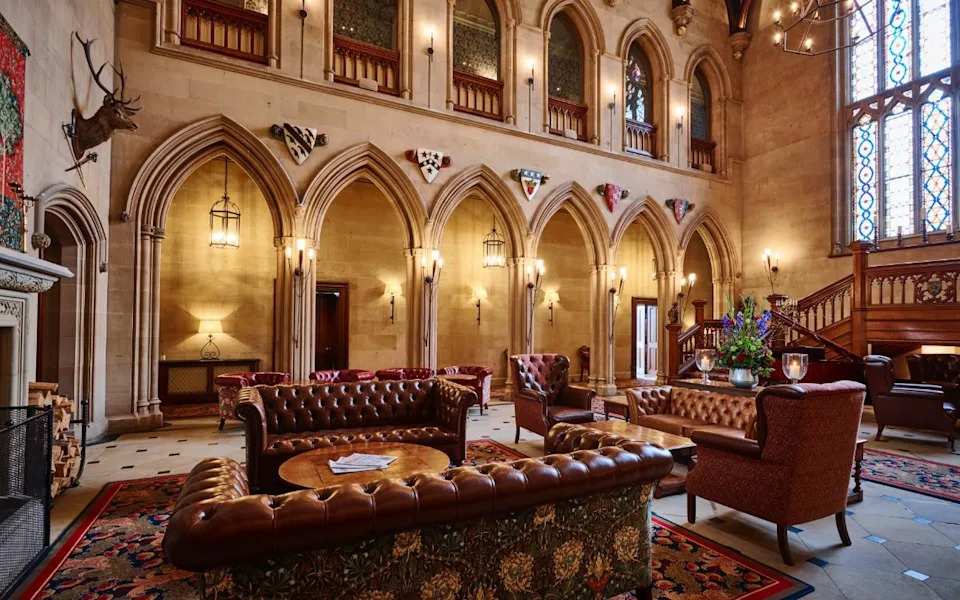 The gothic grandeur of Matfen’s main hall
The gothic grandeur of Matfen’s main hallRead our full review here
Designer digs
Smart and sassy, Beadnell Towers is a dog-friendly seaside hotel near one of Northumberland’s most attractive beaches. It has a warmly rustic-nautical style, and its design gives many nods to its seaside location, while bedrooms are decked out in bold colours, some with beams and stone walls.
AdvertisementAdvertisement#«R5dekkr8lb2m7nfddbH1» iframe AdvertisementAdvertisement#«R9dekkr8lb2m7nfddbH1» iframeRead our full review here
Budget bolthole
Market Cross is a B&B that punches well above its weight. The owners run their Georgian guest house, in the centre of neat Belford village, with a relaxed friendly touch but with luxury hotel standards. Bedrooms are cosseting, the food (evening meals by request) home-produced and there’s a hidden rear garden.
Read our full review here
For more, see our guide to the best hotels in Northumberland.
Back to index
How to get there and how to get around
By car, the A1 from the south, A697 and A68 from the north, and A69 from the west are the main routes. By train, the east coast line has stations at Morpeth, Alnwick and Berwick-upon-Tweed, with Newcastle six miles south of the county. East-west trains between Newcastle and Carlisle provide access to southern Northumberland. There are regular north-south and coastal bus services, although these are less frequent to inland rural areas. Newcastle International airport is on the southern border.
Know before you go
Essential information
There are Tourist Information Centres in: Alnwick, Berwick-upon-Tweed, Corbridge, Haltwhistle, Hexham, Morpeth and Wooler.
Accessibility
Visitors with disabilities are welcomed, although historic sites and buildings may be unable to provide access to all sections. Most beaches have little infrastructure and are unsuitable for wheelchair-users.
Dog-friendly
Beaches have no restrictions other than those noted above.
AdvertisementAdvertisement#«R5vekkr8lb2m7nfddbH1» iframe AdvertisementAdvertisement#«R9vekkr8lb2m7nfddbH1» iframeBack to index
About our expert
My introduction to Northumberland was pretending to be a Roman centurion on a childhood Hadrian’s Wall holiday. Now, living near the Wall, I’ve discovered far more; not least horizon-stretching views, puffins, crab sandwiches, and wild, empty beaches.
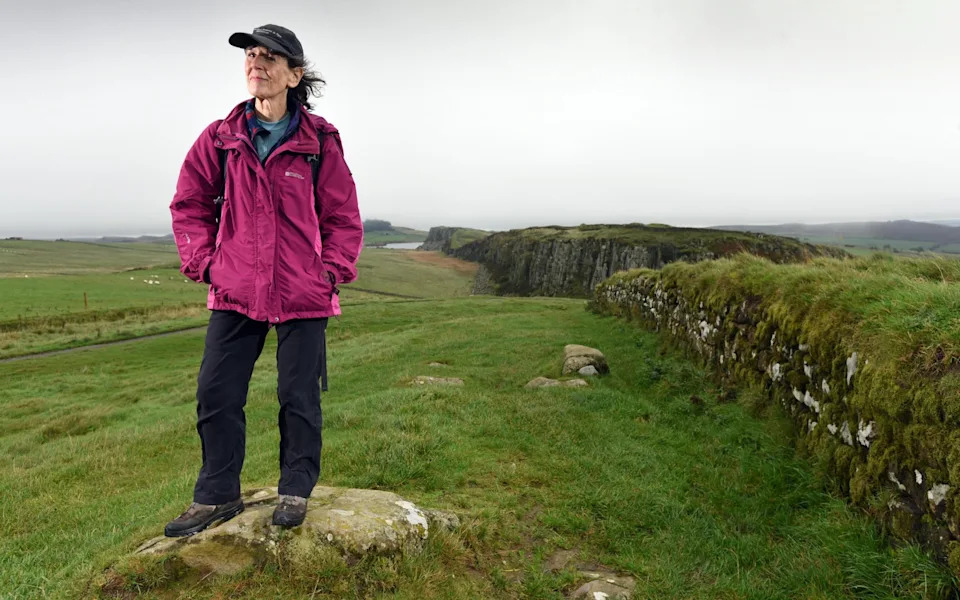 Helen Pickles, Telegraph Travel’s Northumberland expert - Asadour Guzelian
Helen Pickles, Telegraph Travel’s Northumberland expert - Asadour GuzelianBroaden your horizons with award-winning British journalism. Try The Telegraph free for 1 month with unlimited access to our award-winning website, exclusive app, money-saving offers and more.

